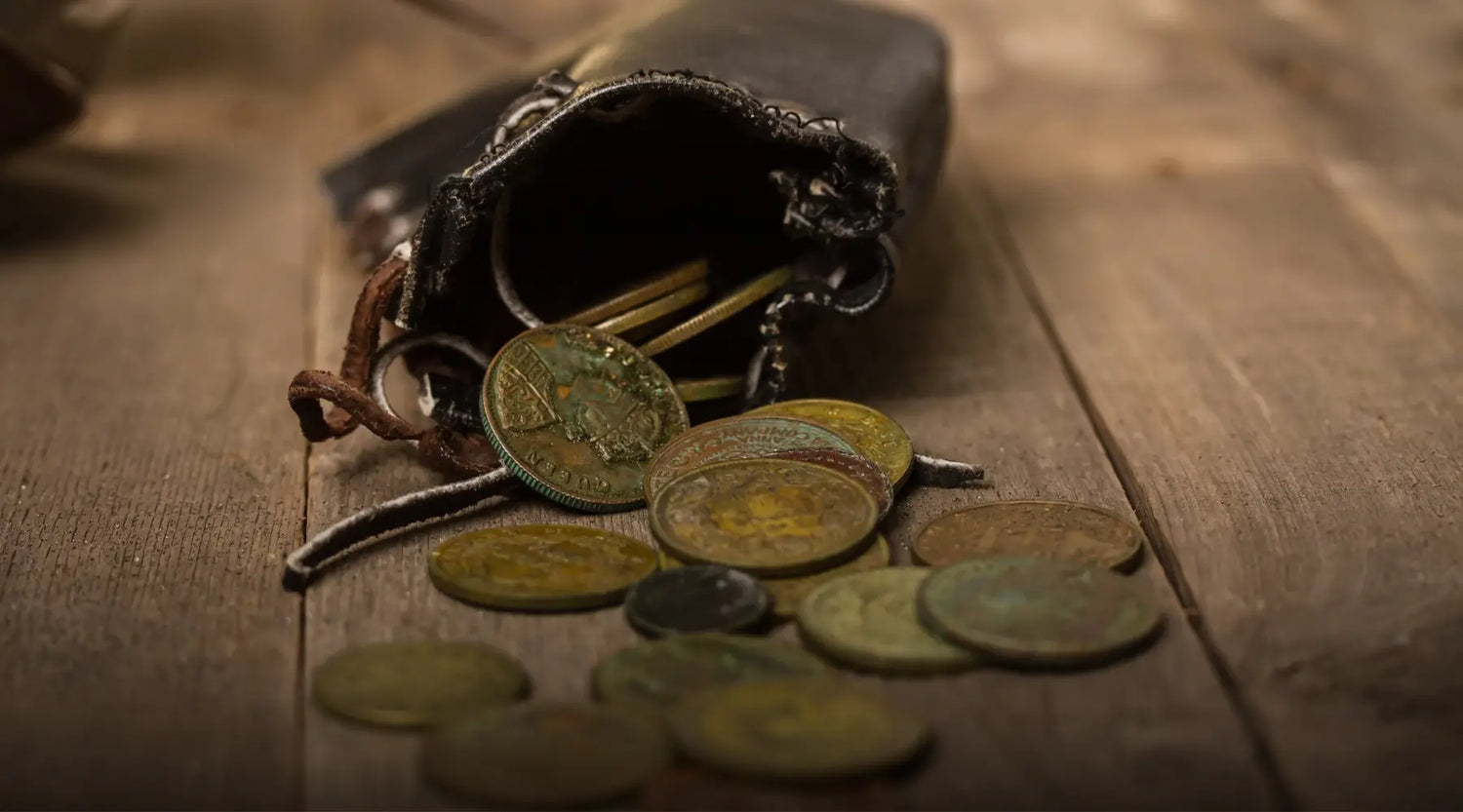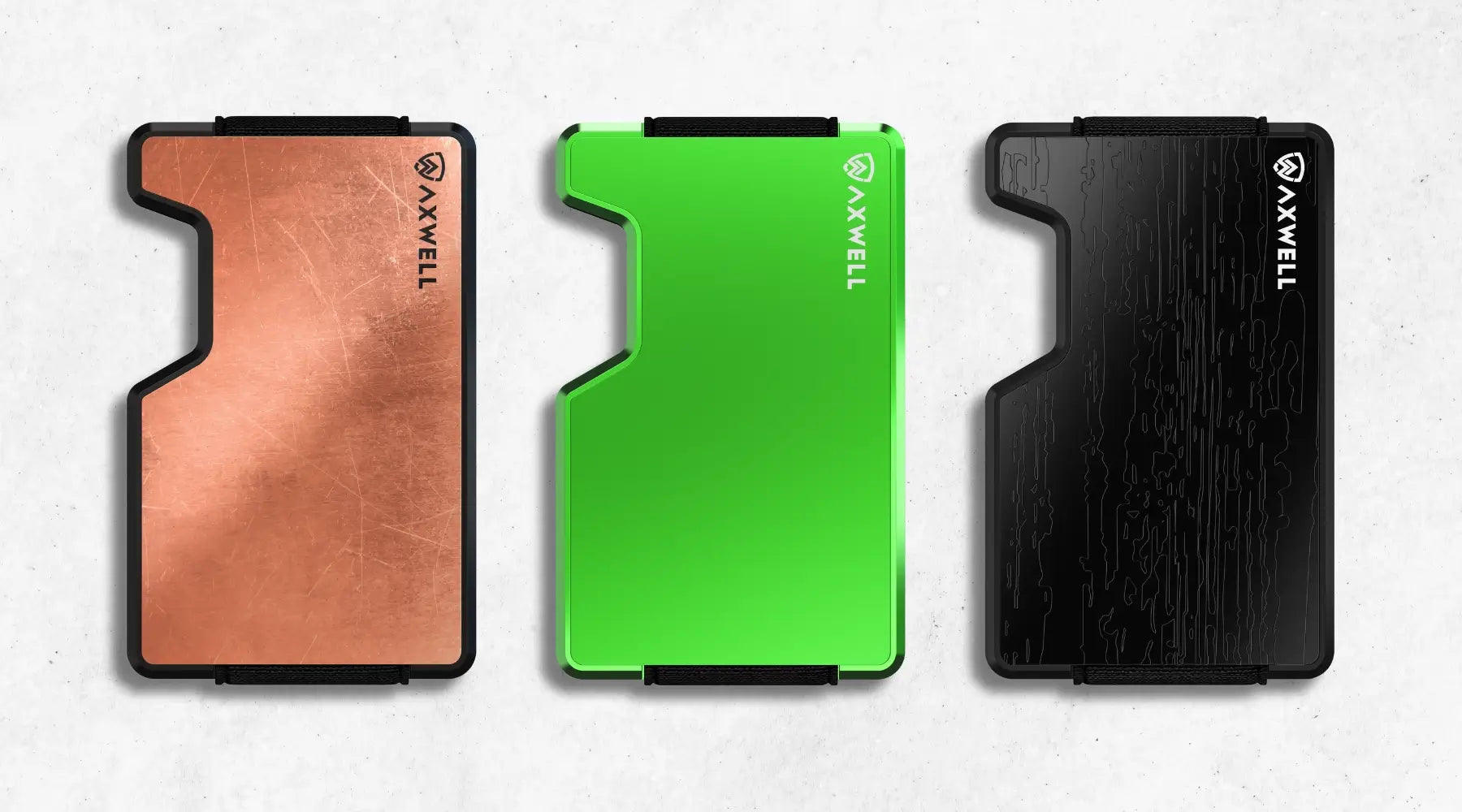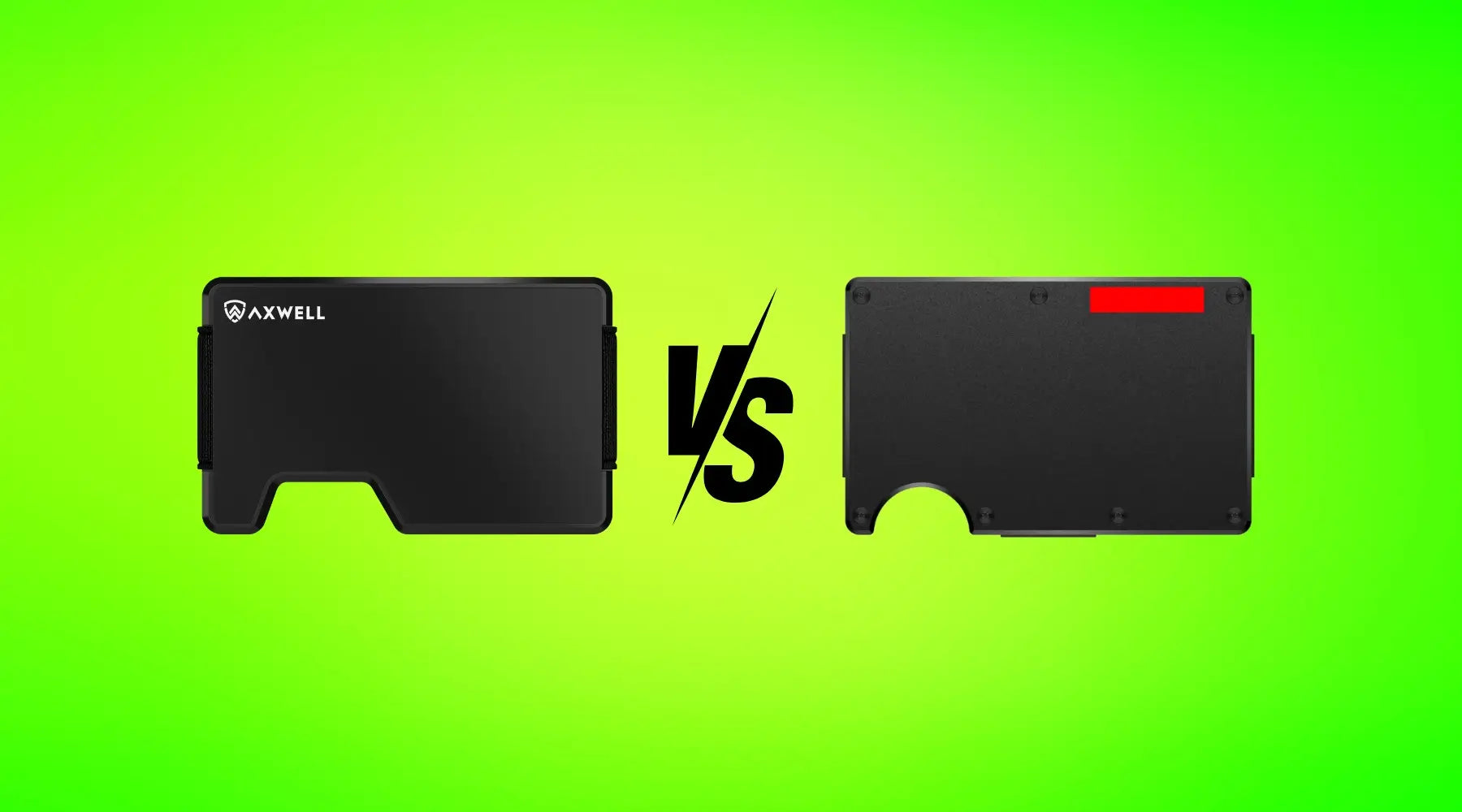The Fascinating History of Wallets: From Ancient Times to Digital Era
The history of wallets dates back to ancient civilizations, where people carried their valuables in small pouches or bags. These early wallets were likely made of materials such as leather, cloth, or paper, and were used to store coins, currency, and other important items.
As civilizations developed and trade became more widespread, the need for a more secure and organized way to carry money and other valuables grew. In the Middle Ages, wallets made of metal began to emerge, offering greater protection against thieves. These metal wallets were often intricately designed and decorated, and were a status symbol for the wealthy.
In the modern era, wallets have evolved to meet the changing needs of consumers. With the rise of credit cards and other forms of electronic payment, wallets now often include specialized slots for holding these types of cards. In addition, the development of online shopping and mobile payments has led to the creation of digital wallets, which allow users to store and manage their financial information electronically.
Today, wallets come in a wide range of styles, materials, and sizes, and are an essential accessory for people around the world. From the earliest pouches and bags of ancient civilizations to the modern digital wallets of today, the history of wallets reflects the changing ways in which people have stored and carried their valuables throughout the ages.

History of Leather Wallets
Leather wallets have a long and storied history dating back to ancient civilizations, where people carried their valuables in small pouches or bags made of leather. These early leather wallets were likely used to store coins, currency, and other important items, and were a practical and durable choice for carrying personal belongings.
Leather wallets continued to evolve over the centuries, with new designs and features being introduced to meet the changing needs of consumers. In the Middle Ages, leather wallets were often embellished with decorative stitching and other ornamentation, and were a symbol of wealth and status.

In the modern era, leather wallets have become an essential accessory for people around the world. With the rise of credit cards and other forms of electronic payment, leather wallets now often include specialized slots for holding these types of cards. In addition, the development of new leather treatments and manufacturing techniques has led to the creation of leather wallets that are thinner, lighter, and more durable than ever before.
Today, leather wallets are available in a wide range of styles, colors, and sizes, and are a popular choice for those looking for a classic and timeless wallet option. They are made of a variety of different leathers, including cowhide, sheepskin, and pigskin, and are used by people of all ages to store and carry their valuables.
History of Metal Wallets
The history of metal wallets dates back to the Middle Ages, when people began to carry their valuables in small, portable metal containers. These early metal wallets were often intricately designed and decorated, and were a status symbol for the wealthy.
Metal wallets were used to store coins, currency, and other small valuable items, and were seen as a more secure alternative to leather or cloth wallets, which could be easily cut or stolen. Metal wallets were also more durable and long-lasting than their non-metal counterparts, and could withstand wear and tear over time.
In the modern era, metal wallets have undergone a number of changes. With the rise of credit cards and other forms of electronic payment, metal wallets now often include specialized slots for holding these types of cards. In addition, the development of new materials and manufacturing techniques has led to the creation of metal wallets that are thinner, lighter, and more durable than ever before.
Today, metal wallets are still popular for their durability and security, and are often chosen by those who need a wallet that can withstand heavy use and rough conditions. They are available in a range of styles and materials, including stainless steel, aluminum, and titanium, and are used by people all over the world to store and carry their valuables.
History of Minimalist Wallets
Minimalist wallets, also known as slim wallets or front pocket wallets, are a more recent development in the history of wallets. These wallets are designed to be small and compact, typically holding only the most essential cards and cash, in order to minimize bulk and streamline the carrying of personal items.
The concept of minimalism, or the idea of simplifying one's possessions and living a more intentional and minimal lifestyle, has gained popularity in recent years. This trend has extended to personal accessories, including wallets, leading to the emergence of minimalist wallets as an alternative to traditional, larger wallets.

Minimalist wallets first gained popularity in the early 2000s, with the introduction of the "magic wallet" – a wallet made of elastic bands that could hold cards and cash securely without the need for a traditional wallet structure. This design inspired a wave of similar slim wallet designs, made of materials such as leather, nylon, and polyester, that emphasized minimalism and functionality.
In the years since, minimalist wallets have continued to evolve, with new materials and designs being introduced to meet the needs of consumers. Today, minimalist wallets are a popular choice for those looking to carry only the essentials and streamline their personal items.
History of Crypto Wallets
Cryptocurrency, or digital currency that uses cryptography for secure financial transactions, has been around since the late 1990s, but it only gained widespread attention in recent years with the rise of Bitcoin and other digital currencies. In order to store and use cryptocurrency, individuals and businesses need a way to securely store their digital assets – this is where cryptocurrency wallets come in.
Cryptocurrency wallets are digital wallets that store the private keys necessary to access and use cryptocurrency. They can be thought of as similar to traditional physical wallets, but instead of holding physical currency, they hold digital currency in the form of cryptocurrency.

The first cryptocurrency wallet was developed in 2008 for Bitcoin, and was called a "wallet.dat" file. This early wallet was a simple way to store Bitcoin on a computer, and did not have many of the features and functionality that are common in modern cryptocurrency wallets.
Since then, cryptocurrency wallets have evolved and become more sophisticated, with the development of new technologies such as hardware wallets and mobile wallets. Today, cryptocurrency wallets are an essential tool for those looking to store and use digital currencies, and come in a wide range of forms, including desktop wallets, mobile wallets, and hardware wallets.
The Most Popular Types of Wallets in 2025
There are many different types of wallets available, and the type of wallet you choose will depend on your needs and personal preferences. Some common types of wallets include:
Traditional Wallets
These are the most common type of wallet and are typically made of leather, fabric, or paper. They can be carried in a pocket, purse, or bag, and are used to store cards, cash, and other personal items.

Minimalist Wallets
Also known as slim wallets or front pocket wallets, minimalist wallets are designed to be small and compact, typically holding only the most essential cards and cash. They are a popular choice for those looking to streamline their personal items and minimize bulk.
Bifold Wallets
These wallets are designed to fold in half, and typically have two compartments for storing cards and cash. They are a popular choice for their compact size and ease of use.
Trifold Wallets
Trifold wallets are similar to bifold wallets, but have three compartments instead of two. They offer more storage space than bifold wallets, but can be slightly bulkier.

Clutch Wallets
Clutch wallets are larger than traditional wallets and are designed to be carried in the hand or under the arm. They are a popular choice for special occasions and evening events.
Passport Wallets
These wallets are designed specifically to hold a passport, and often include additional slots for cards and cash. They are a popular choice for travelers.

Digital Wallets
Digital wallets are electronic wallets that allow users to store and manage their financial information electronically. They can be used for online shopping, mobile payments, and other transactions.
FAQs
What is the origin of wallets?
Wallets date back to ancient civilizations where people used small pouches or bags made of materials such as leather, cloth, or paper to carry coins, currency, and other important items.
How did wallets evolve during the Middle Ages?
In the Middle Ages, wallets made of metal began to emerge. These metal wallets were intricately designed and decorated, offering greater protection against thieves and becoming status symbols for the wealthy.
When did leather wallets become popular?
Leather wallets have been used since ancient times, but they gained popularity during the Middle Ages and have evolved over the centuries. In modern times, they became essential accessories with the rise of credit cards and other forms of electronic payment.
How did wallets change with the advent of credit cards?
With the introduction of credit cards, wallets began to include specialized slots for holding these cards. This development led to the creation of more organized and secure wallets tailored to the needs of modern consumers.
What are digital wallets?
Digital wallets, or e-wallets, allow users to store and manage their financial information electronically. They are used for online shopping, mobile payments, and other transactions, eliminating the need for physical currency.
What are some different types of wallets used today?
There are various types of wallets, including traditional leather wallets, minimalist wallets, bifold and trifold wallets, clutch wallets, passport wallets, and digital wallets. Each type serves different needs and preferences.
What materials are commonly used in wallets?
Wallets can be made from a variety of materials, including leather, metal (such as stainless steel, aluminum, and titanium), fabric, and synthetic materials. Each material offers different benefits in terms of durability, style, and functionality.
What are minimalist wallets?
Minimalist wallets, also known as slim wallets or front pocket wallets, are designed to be small and compact, holding only the most essential cards and cash. They emphasize minimalism and functionality, reducing bulk and streamlining personal items.
How have metal wallets evolved?
Metal wallets originated in the Middle Ages as portable containers for valuables. Modern metal wallets now include features like specialized slots for credit cards, RFID blocking technology, and are made from durable materials such as aluminum and titanium.
What are cryptocurrency wallets?
Cryptocurrency wallets are digital wallets that store the private keys necessary to access and use cryptocurrency. They come in various forms, including desktop wallets, mobile wallets, and hardware wallets, and are essential for managing digital currency.
Why are leather wallets still popular?
Leather wallets remain popular due to their durability, classic style, and the variety of designs available. Modern treatments and manufacturing techniques have made leather wallets thinner, lighter, and more durable than ever before.
What is the significance of RFID-blocking wallets?
RFID-blocking wallets protect against unauthorized scanning of RFID chips embedded in credit cards, passports, and other identification cards. This feature is crucial for preventing identity theft and maintaining personal security.
How did the design of wallets change with the introduction of mobile payments?
The rise of mobile payments and digital wallets led to the creation of slimmer, more functional wallets designed to carry fewer physical cards and more cash. This shift emphasizes the convenience and security of carrying digital forms of payment.
What are some modern innovations in wallet design?
Modern wallet designs include features like RFID blocking, Mag-Lock™ technology for easy customization, replaceable cover plates, and the use of advanced materials for increased durability and functionality.
What is the future of wallets?
The future of wallets lies in the continued integration of technology, such as digital wallets and advanced security features, alongside traditional materials and designs. As consumer needs evolve, wallets will likely become even more versatile, secure, and tailored to individual preferences.
How can I choose the right wallet for my needs?
When choosing a wallet, consider factors such as material, size, capacity, security features, and style. Determine what you need to carry daily and select a wallet that offers the right balance of functionality and aesthetics to suit your lifestyle.
What are some popular wallet brands today?
Popular wallet brands today include Axwell, Ridge, Bellroy, Herschel, and Fossil, among others. Each brand offers unique designs and features, catering to different tastes and preferences.
How can I maintain and care for my wallet?
To maintain and care for your wallet, regularly clean it with appropriate products for the material, avoid overstuffing it, and store it in a cool, dry place. For leather wallets, use leather conditioners to keep the material supple and prevent cracking.
What are some unique wallet designs available today?
Unique wallet designs include minimalist wallets with RFID-blocking technology, wallets with built-in money clips or coin trays, and digital wallets for cryptocurrency. These designs cater to various needs and preferences, offering both style and functionality.
How have wallets reflected changes in society and technology?
Wallets have evolved in response to changes in society and technology, from ancient pouches for carrying coins to modern digital wallets for managing financial information electronically. This evolution reflects the changing ways people store and carry their valuables, adapting to new needs and innovations.
Final Thoughts
In conclusion, the history of wallets is a long and varied one, with the earliest wallets dating back to ancient civilizations and evolving over the centuries to meet the changing needs of consumers. From simple pouches and bags made of leather and cloth, to modern digital wallets that store financial information electronically, wallets have undergone many changes throughout history.
Today, wallets come in a wide range of styles, materials, and sizes, and are used by people all over the world to store and carry their valuables. From traditional leather wallets to minimalist slim wallets and digital wallets, there is a wallet option to suit every need and preference. The history of wallets reflects the changing ways in which people have stored and carried their valuables throughout the ages, and will no doubt continue to evolve as new technologies and innovations emerge.
If you’re looking to upgrade your current wallet or know someone who desperately needs a new wallet we got you covered. Axwell has been making slim, minimalist, metal wallets since 2017. Our wallets are designed to last a lifetime and come with a free lifetime guarantee in case anything goes wrong. You can save on your first purchase by signing up for our Axwell Army Newsletter today.







